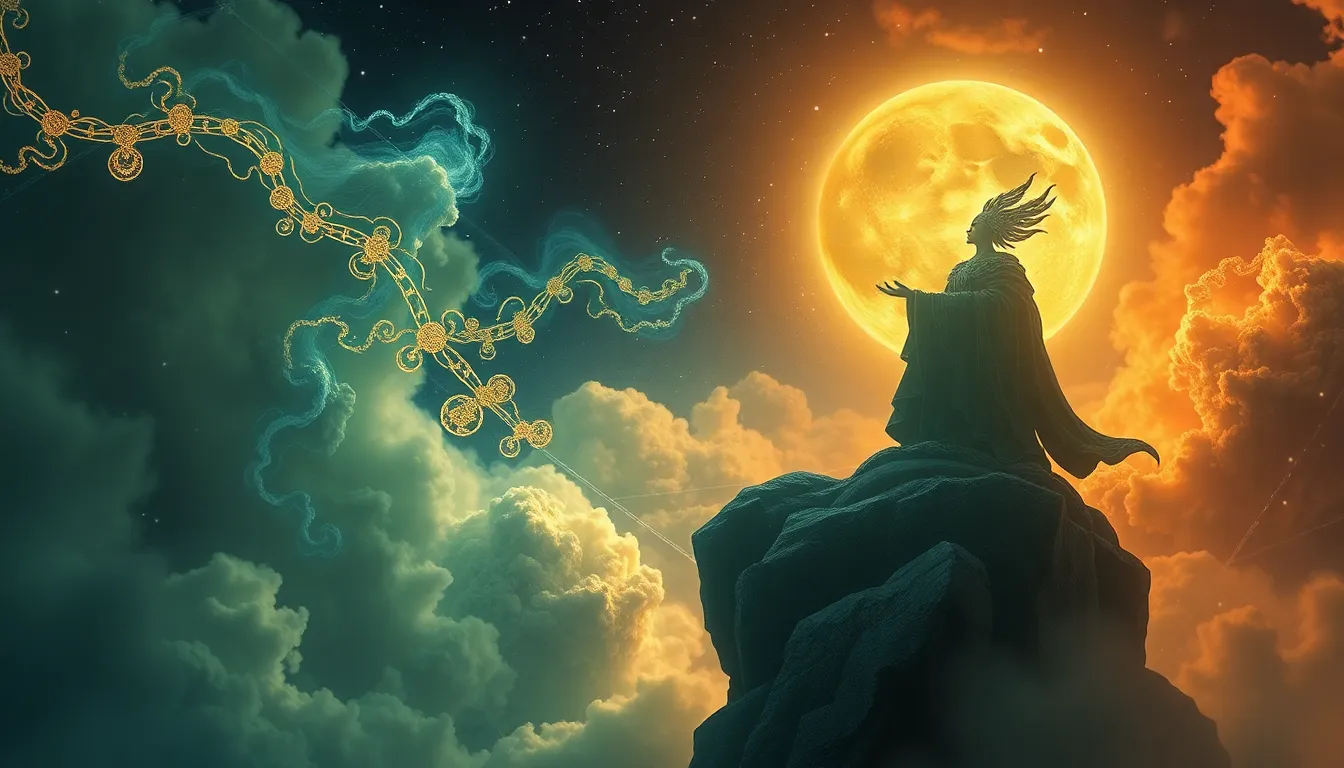The Quest for the Legendary Healer: Myths of Restoration
I. Introduction
The term “Legendary Healer” encompasses a wide range of figures and archetypes across different cultures and historical contexts. These are individuals believed to possess extraordinary abilities to heal the sick, restore health, and even revive the dead. From ancient shamans to modern practitioners, the concept of healing transcends mere physical restoration, encapsulating spiritual and emotional dimensions as well.
Healing myths hold profound significance in human history, reflecting our innate desire to overcome suffering and find solace in times of distress. This article aims to explore the historical context, prominent legends, symbolism, and modern interpretations of legendary healers, as well as how these myths continue to shape our understanding of health and wellness today.
II. Historical Context of Healing Myths
Throughout history, the role of healers has been pivotal in societies, acting as intermediaries between the physical and spiritual worlds. In ancient times, healers—whether shamans, priests, or wise women—were often revered figures who wielded knowledge of medicinal herbs, rituals, and spiritual practices.
Comparing healing practices across different cultures reveals both similarities and differences:
- In Ancient Egypt, priests practiced medicine while invoking the gods for assistance.
- Chinese medicine emphasized balance and harmony, using acupuncture and herbal remedies.
- In Indigenous cultures, shamans utilized rituals and community support to heal physical and spiritual ailments.
The archetype of the healer has evolved through the ages, adapting to the changing needs and beliefs of societies. From the mythic figures of antiquity to the scientifically informed practitioners of today, the quest for healing remains a timeless pursuit.
III. Prominent Legends of Healers
Many cultures have produced legendary healers whose stories resonate through time:
- Asclepius: In Greek mythology, Asclepius was the god of medicine and healing. Revered in temples known as Asclepieia, he was said to perform miraculous cures, often invoking the assistance of his daughters, Hygieia (health) and Panacea (universal remedy).
- Buddha: In Buddhist tradition, Siddhartha Gautama, known as the Buddha, is celebrated for his teachings on suffering and healing. His practices, promoting mindfulness and compassion, continue to inspire millions towards holistic wellness.
- Native American Shamans: In various Indigenous cultures, shamans are seen as spiritual healers who connect with the spirit world to restore balance and health. Their practices often incorporate rituals, herbal medicine, and community involvement.
IV. Symbolism of Healing in Myths
Healing in myths often represents more than physical restoration; it symbolizes a journey of transformation:
- The Journey: Many healing narratives depict a journey, where the hero must confront challenges and undergo personal growth before achieving wellness.
- Nature’s Role: Nature frequently acts as a source of healing energy and wisdom, emphasizing the interconnectedness of humans and the environment.
- Metaphor of Restoration: Healing serves as a metaphor for personal and communal restoration, reflecting societal struggles and aspirations for renewal.
V. The Intersection of Myth and Medicine
Ancient myths continue to influence modern healing practices, blending tradition with contemporary medicine:
- Influence on Practices: Many modern therapies incorporate elements of ancient wisdom, such as herbal medicine and mindfulness techniques.
- Faith and Belief: The role of faith in healing is significant; belief in a healer’s power can enhance the efficacy of treatment.
- Case Studies: Numerous practitioners draw inspiration from legendary healers, adopting holistic approaches that honor both science and tradition.
VI. The Psychological Aspects of Healing Myths
The interplay between belief systems and health is profound:
- Impact on Health: Belief in healing narratives can have substantial effects on both physical and mental health, often leading to improved outcomes.
- Placebo Effect: The placebo effect exemplifies how belief can trigger real physiological changes, illustrating the power of mind over body.
- Therapeutic Narratives: Healing stories are increasingly employed in psychology as tools for therapy, helping individuals reframe their experiences and foster resilience.
VII. Modern Interpretations of Legendary Healers
In contemporary society, the quest for the “modern healer” has gained traction:
- Holistic Medicine: The rise of holistic and integrative medicine reflects a growing recognition of the importance of addressing the whole person—body, mind, and spirit.
- Influence of Mythology: Mythological themes are woven into wellness culture, inspiring practices that emphasize self-care, community, and connection.
- New Healers: Today’s healers, whether they are therapists, yoga instructors, or wellness coaches, often embody aspects of legendary healers, guiding individuals on their healing journeys.
VIII. Critiques and Skepticism of Healing Myths
Despite the allure of healing myths, they are not without critique:
- Scientific Perspectives: Many scientific communities question the validity of mythical healing practices, advocating for evidence-based approaches to health.
- Dangers of Misinformation: The spread of unverified healing narratives can lead to misinformation, potentially putting individuals at risk.
- Balancing Tradition and Science: Finding a balance between traditional beliefs and modern scientific understanding is crucial for effective health and wellness practices.
IX. The Future of Healing Myths
As we move further into the digital age, healing narratives evolve:
- Digital Culture: Technology is reshaping how we share and engage with healing stories, creating new platforms for connection and support.
- Storytelling’s Role: The power of storytelling remains central to healing practices, fostering community and shared experiences.
- New Legendary Healers: The 21st century may see the emergence of new legendary healers, adapting ancient wisdom to meet modern needs.
X. Conclusion
Healing myths play an essential role in our understanding of health, wellness, and the human experience. They provide insights into how cultures perceive suffering and restoration, illustrating the timeless quest for healing. As we explore these narratives, we are encouraged to reflect on our personal and cultural stories of healing, recognizing the ongoing journey of restoration in our lives. Ultimately, the quest for the legendary healer continues, intertwining tradition with modernity in a rich tapestry of human experience.



